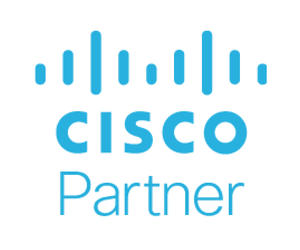Small businesses are making the shift to remote work. As noted by recent National Small Business Association survey data, the number of SMB owners and employees working from home doubled between March and April 2020, with numbers only increasing as the pandemic presses on. And there’s now data to suggest that many remote work situations will remain permanent as teams see productivity gains even at a distance.
For small businesses, however, the rapid evolution of remote-first work poses a critical challenge: security. While larger companies are also under threat from new and old attacks alike, even pre-COVID predictions showed an uptick in SMB security threats as hackers recognized the benefits in breaking into networks with lower budgets and less-than-formidable IT barriers.
With SMBs already accounting for 43 percent of all data breaches, and that number on the rise as coronavirus-focused phishing scams explode, it’s critical for small businesses to secure evolving IT environments even as they struggle to find their best-fit operational output in this cloud-first, collaboration-focused world.
So, let’s break it down to build it up: Here are three ways small businesses can effectively secure remote work at scale.
DISCOVER: Learn more about powering the collaboration that your small business needs.
1. In a Remote Work World, Businesses Must Control User Action
Recent survey data notes that 84 percent of businesses plan to expand work-from-home capacity even as crisis conditions are replaced with “new normal” operations. It makes sense as employees have demonstrated the ability to deliver productivity at a distance, and cloud-based communication tools are now up to the task of delivering reliable collaboration over time and distance.
But organizations are understandably worried about potential security risks. For example, 47 percent pointed to potentially problematic web apps, while 68 percent highlighted concerns around file sharing.
For small businesses, this suggests the need for increased control over user action at a distance. From setting risk-based access policies that provide permission on an as-needed basis to complete visibility into user actions across both internal networks and collaborative tools, accounting for user activity is critical to developing protective policies capable of identifying threats before malicious actors compromise resources.
2. Amid BYOD, Protecting Workers’ Devices Is Crucial
As noted by CSO, staffers are quickly becoming more comfortable with work-from-home environments as their familiarity with new processes, policies and applications improves. But this also creates a critical disconnect: end-user devices.
Staff personal devices are now critical to ensuring continuity of business operations. As a result, even small businesses unsure about the move to mobile must now embrace the device-first framework — but they can’t ignore the accompanying risks.
With personal and professional lives now invariably overlapped, businesses need device control solutions that offer key capabilities, including:
- Facial and fingerprint recognition
- Remote data wiping
- PIN requirements
- Per-device file-sharing controls
3. Collaborative Work Must Be Secured
Content is the new capital. Attackers that compromise collaborative sessions or hijack communications could potentially discover key data to simply hold, sell for ransom or distribute.
As a result, SMBs need collaborative content solutions that offer native defense of critical data. For example, Cisco Webex provides end-to-end encryption for both Webex Meetings and Teams to ensure critical information is both securely transmitted and stored. The collaboration platform also includes in-house transcription recordings with AES-25 encryption along with the ability to set recordings as view-only, prevent the download of recordings and enforce password protection for all network-based recordings.
Out-of-office operations are here to stay. For SMBs, this means a bigger focus on collaborative, cloud-based content sharing underpinned by personal device use across business networks. But with hackers now targeting this diverse, diffuse attack surface to compromise key data, it’s critical for small businesses to deploy protective platforms capable of accounting for user actions, defending user devices and securing collaborative content at scale.
Brought to you by:













